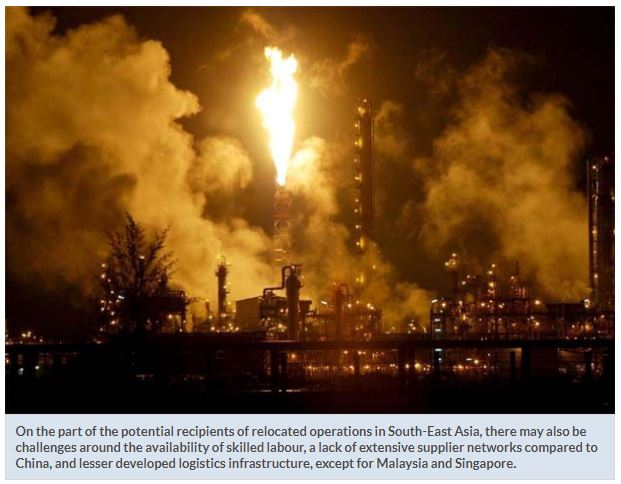Tax-effective supply chain planning
COVID-19 has had an unprecedented impact on small and medium-sized businesses as well as large multinationals.
Notwithstanding this very challenging environment, businesses could take advantage of the uncertain times and leverage opportunities to review, reset and restructure certain sections of their supply chains.
By renewing their strategies in response to this disruption, they may seize new opportunities and position themselves in a more efficient and agile way to be ready to grow and thrive in the future.
Disruption, led by US actions relating to the widespread use of tariffs as well as technology transfer restrictions has caused an increase in global policy changes and actions, resulting in companies reviewing elements of their supply chains which have touchpoints with China.
These actions are causing companies to reconsider the extent of their dependency on China and pulling them towards increasing local manufacturing for non-Chinese consumers.
Together with the rising costs in China, the changes in consumer behaviour, digitalisation and new alternate sources of supply are also causing companies to carry out more detailed scenario (or “what if”) planning and assessments around possible relocation.
Some companies are thus looking to diversify a proportion of their manufacturing activities away from China to South-East Asia.
In response, governments in the region are taking on a proactive role in trying to attract and influence the relocation by introducing business-friendly policies and incentives.
Japan is offering companies payments and subsidies to relocate manufacturing activities and invest in factories in Japan and other South-East Asian countries.
Indonesia has also set up a task force to support companies with investment enquiries and applications, with the goal of reducing the time intervals from enquiry to application to offer to transition.
The decoupling of supply chains with prior heavy reliance on China is often complex, and an exercise that should not be taken lightly.
Understanding the full implications and undertaking careful planning that takes into account factors such as tax, customs, legal, regulatory requirements and politics, are fundamental to helping mitigate the risks and hidden costs associated with such a move.
It is also key to appreciate the interdependencies among all the aforementioned areas when designing a future-state supply chain network and operating model that balances operational and tax efficiencies. Detailed cross-border, cross-functional planning will be a significant factor in the success of any manufacturing move.
On the part of the potential recipients of relocated operations in South-East Asia, there may also be challenges around the availability of skilled labour, a lack of extensive supplier networks compared to China, and lesser developed logistics infrastructure, except for Malaysia and Singapore.
However, in certain countries, there are already many international businesses and long-standing trade networks that, with the help of the right trusted on-the-ground advisers, companies could tap into in order to smoothly establish a local footprint that can plug into their current supply chain networks.
In addition to the concerns and challenges around supply chain disruption and manufacturing relocation, the shift in the political relationship between Hong Kong and mainland China is also creating uncertainty around the viability of companies’ activities and footprints in Hong Kong.
This, together with the increasing need for companies to cut costs, is causing multinationals with a Hong Kong hub to undertake contingency planning to review whether other locations, especially those in South-East Asia, may offer more cost- and tax-effective alternatives.
This is a huge opportunity for South-East Asian countries, particularly Malaysia and Singapore, to show multinationals what they have to offer.
The excellent corporate tax incentives available in both countries, their physical location in the heart of South-East Asia, as well as access to cost-efficient senior talent, are all important factors that companies would take into consideration when looking at relocating a regional or global hub.
Performing due diligence on a supply chain is extremely important. This should include understanding the fiscal complexity as part of the relocation assessment and the change impact, uncovering any hidden costs and proactively identifying potential risks.
Relocating manufacturing activities and searching for alternative regional hub locations are hot topics for multinationals currently. Both could lead to improved efficiencies and resilience in supply chains. Nevertheless, these actions are not for the fainthearted and will involve months of careful planning.
It is critical to start planning early, involve all stakeholders in all relevant locations from the beginning, as well as have experienced advisors covering both the outbound and inbound sides, to help ensure a successful journey to a more tax-effective supply chain and operating model.
Sam Barrett is an associate partner in Ernst & Young Tax Consultants Sdn Bhd and a member of the EY APAC operating model effectiveness team. The views reflected above are the views of the author and do not necessarily reflect the views of the global EY organisation or its member firms.
Source: https://www.thestar.com.my/business/business-news/2020/11/02/tax-effective-supply-chain-planning


 English
English




